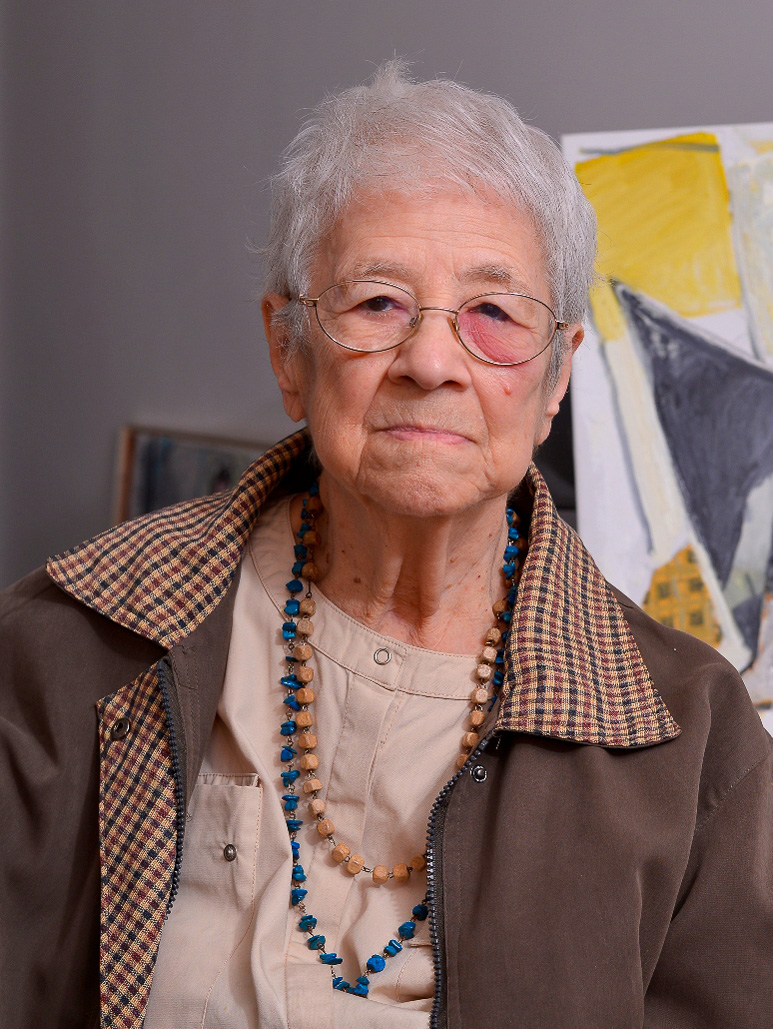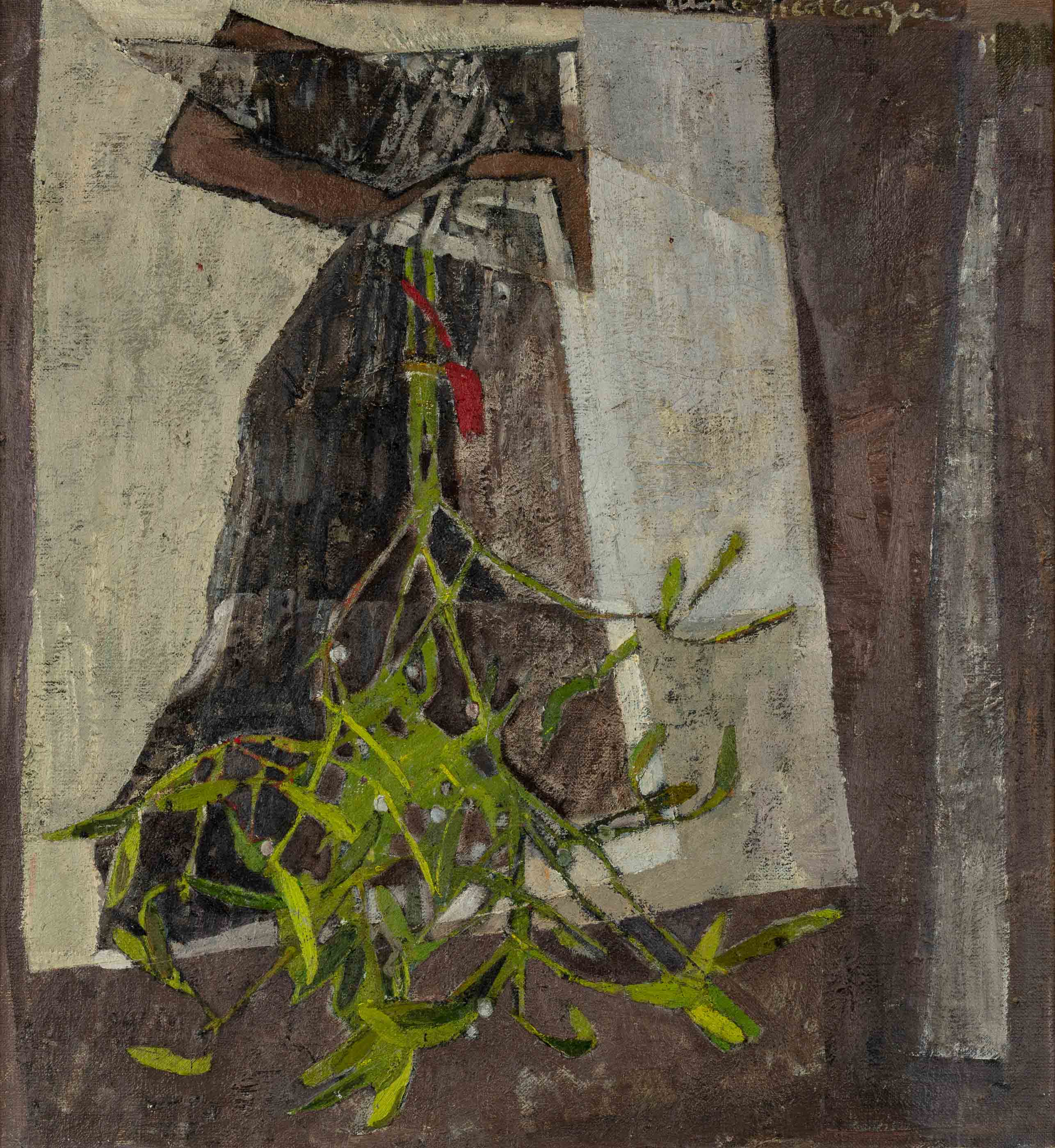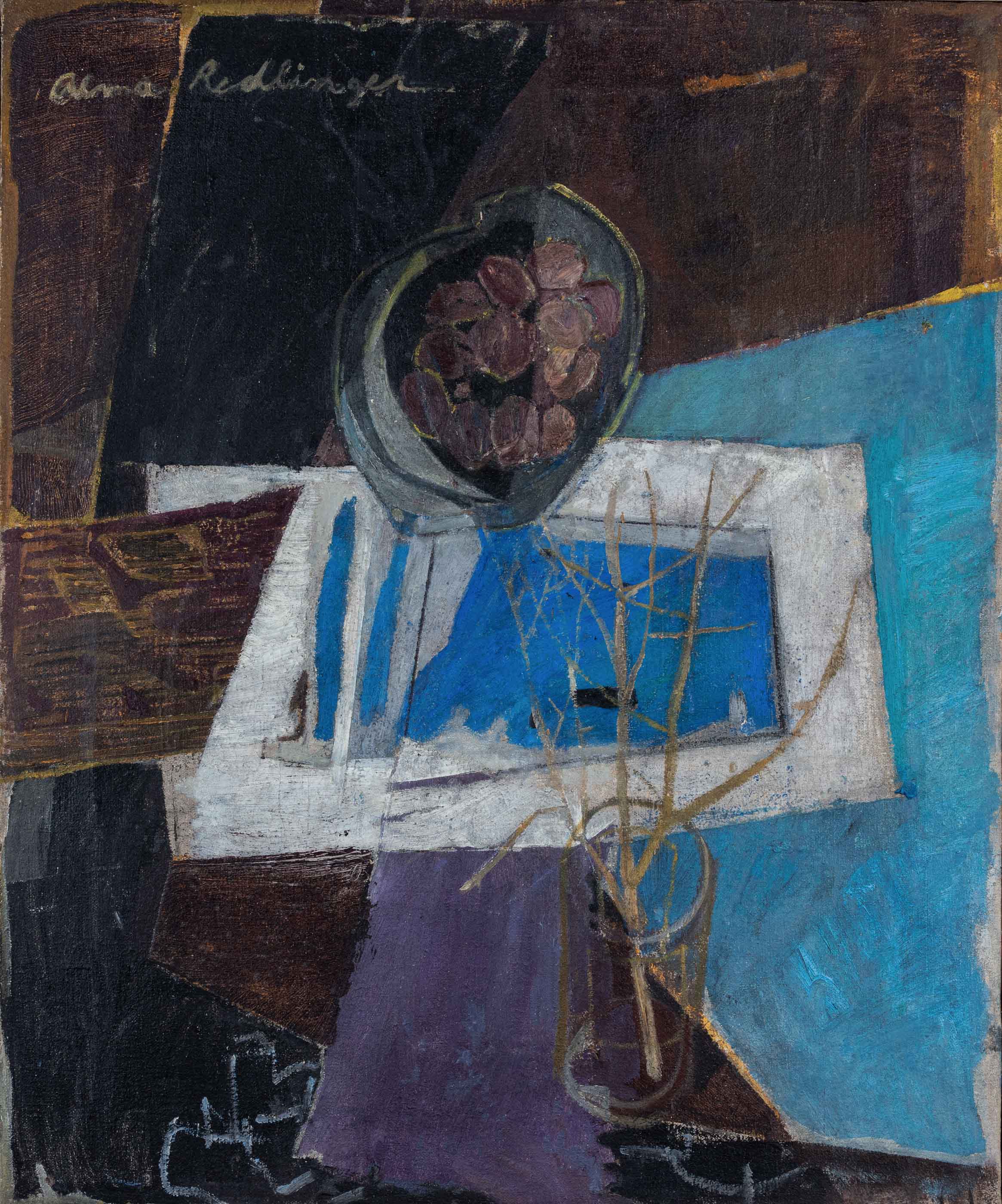Alma Redlinger

Bucharest, 1924 - Bucharest, 2017
The Life
She could have become an accountant had it not been for the series of tragedies that took place in Romania between 1939 and 1942. Instead, Alma Redlinger built her life around the avant-garde and a career as vibrant and meaningful as her paintings.
The Art
Alma's style presents a vigor of the lines that set her paintings in the artistic discourse of avant-gardism, cubism, expressionism, constructivism, modernism, and postmodernism. She drew in charcoal and painted portraits or still life in watercolor and oil on canvas.
Sketching the artist
Alma Redlinger was born in Bucharest on March 8, 1924, to parents Laura and Marcu Polak.
Because the artist's biographical testimonies are incomplete, we know nothing about her life between the moment of birth and that of her first artistic studies. We can only imagine how young Alma would dream of the future, projecting herself within a Bucharest that was already healed from the trauma of a world conflagration, through effervescence and joie de vivre. However, real-life, the one that would be told in and through the paintings signed by the artist, began in adulthood when history, and then love, composed a counterpoint to her path.
When Life has other plans
Alma, like many young people of Jewish descent, found herself living at a time when racial laws were being implemented in Romania. She was banned from following her accounting studies, thus creating the premises for one essential moment for her later artistic career.
We can say that without this historical intervention, without the moment of fracture of the living present, the Romanian art world could have lost the encounter with such a unique artistic vision. This biographical detail brings her closer to Charlotte Salomon, another expressionist artistic presence that appeared after the persecution of Jews in Nazi Germany. The destinies of the two artists overlap for a moment only, history preparing their opposed paths: when Charlotte Salomon's work materialized her swan song and recorded an unfulfilled love, Alma Redlinger would have been completed in the form of a painted diary her married life with Ladislau Redlinger.
The light at the end of the canvas
Throughout World War II, Alma Redlinger studied painting under the guidance of artist Max Hermann Maxy in Bucharest, first at the Free Academy of Painting (1940-1944) and later at the Free Academy Guguianu’(1944-1945) – both alternative educational institutions set up to meet the needs of Jew students left without the right of education. Guided by Maxy, Alma took over conceptual elements specific to various forms of artistic expression such as cubism, fauvism, and expressionism.
Everything she learned was used in a personalized way, constantly adapted to fit into contemporaneity. For example, her paintings present vigor of the lines, yet they do not manifest sharp cubism so that the roundness of emotion won't be hidden. Each brushstroke in the interior scenes, from portraits to still life, shapes the artistic discourse, placing value on the beauty of life. For each composition, Redlinger uses vibrant tones to give the feeling that the subject caught on canvas was synthesized and contained in its essential form.
After all, Alma Redlinger, in one of the few interviews given, confessed a lack of ability in expressing herself using words, often stating that her paintings speak much better than she can do herself.
Finding herself at peace
In parallel with her artistic activity, Alma took part in a sociological documentation team, with which she tirelessly journeyed throughout entire Romania, visiting museums and communities alongside a historian. These travel experiences served as an opportunity for self-exploration. Towards the end of her life, Alma’s illness prevented her from painting. Reduced to reading and contemplating all day, the situation made her question "What would people who don't paint do?" She died in Bucharest, on the 1st of February 2017.
The story of Alma Redlinger, the Romanian artist of Jewish origin, is an exceptional one because, for her, life and art formed an indissoluble whole. The two have merged so much that we can't talk separately about Alma the artist or Alma the person. Alma Redlinger became the painter who rendered the most sensitive emotions of life through the most rigorous touches. She was one who did not live her days painting but painted her living days.


